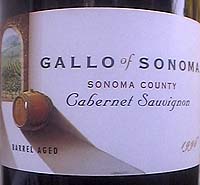The carnivore's dilemma

Whole Foods Market, according to a report in the New York Times, will carry meat that is labeled "animal compassionate," in a bid to win business from consumers who want to to ensure that the animals they eat are humanely raised before slaughter. The Times accurately reports that this new label "comes as a growing number of retailers are making similar animal-welfare claims" such as "'free farmed,' 'certified humane,' 'cage free' and 'free range.'"
Who exactly is supposed to benefit from this shift in standards for livestock and poultry production? The animals themselves, to be sure. Among human beneficiaries, the picture gets a bit more complicated.
As with any other labeling regime, in agricultural law as elsewhere, maximizing consumer welfare through the disclosure of information is supposed to be the paramount interest. As Morgan Holcomb has noted on this forum, however, consumer interest rarely triumphs. Humane slaughter increases the price of food; the Times reports figures in the neighborhood of 30 to 40 percent. On the other hand, fully informed consumer choice, whether exercised in favor of lower price or in favor of some other benefit, is just that: the realization of consumer welfare.
 I suspect that there is, as usual, a farmer-oriented interest at stake. On this model, consumer welfare is a secondary consideration (nice to have in the abstract, but readily sacrificed if producer welfare dictates a different direction in policy). In the interstices of Amy Broadmoore's insightful taxonomy of regulatory rationales in agricultural law lies the hint of the prime mover in American agricultural policy: avoiding excessive concentration and comprehensive vertical integration in agricultural production markets.
I suspect that there is, as usual, a farmer-oriented interest at stake. On this model, consumer welfare is a secondary consideration (nice to have in the abstract, but readily sacrificed if producer welfare dictates a different direction in policy). In the interstices of Amy Broadmoore's insightful taxonomy of regulatory rationales in agricultural law lies the hint of the prime mover in American agricultural policy: avoiding excessive concentration and comprehensive vertical integration in agricultural production markets.The instinct is simple: Holding down farm sizes and minimizing agribusiness influence should, ceteris paribus, maximize the number of entrepreneurial opportunities in production agriculture. But of all the weapons in agricultural law's regulatory arsenal, consumer-oriented labeling of meat, poultry, and eggs may be the least effective in structuring the industry.
The answer lies in basic agricultural economics. Like dairy production without rbST, avoidance of genetically modified seed, or organic production writ large, humane animal husbandry raises gross production costs. Preexisting economies of scale remain intact. To be sure, there may be learning curve advantages that favor specialists who have shunned conventional production techniques. But if anything the mass marketing of foods based on specific production techniques levels the learning curve, and over time the bigger players will regain or even strengthen their dominant position. Moreover, higher costs ex ante will put a premium on borrowing and leverage, and smaller producers and entrants may find that they have no option besides contract production. The only difference is the identity and perhaps the corporate philosophy of the purchaser: Whole Foods Market rather than, say, Cub Foods.
 If organic production, integrated pest management, and free-range techniques are worth pursuing because they advance environmental goals or enhance consumer welfare, then the law has a meaningful role to play in ensuring the veracity of labeling that touts the use of these techniques. But smallness has no monopoly on virtue. The Mall of America is a leader in integrated pest management -- how else can the megamall control the insects that accompany all those plants and rule the atriums and corridors of the United States' largest enclosed shopping space? Gallo and other mass-market vintners have embraced organic viticulture.
If organic production, integrated pest management, and free-range techniques are worth pursuing because they advance environmental goals or enhance consumer welfare, then the law has a meaningful role to play in ensuring the veracity of labeling that touts the use of these techniques. But smallness has no monopoly on virtue. The Mall of America is a leader in integrated pest management -- how else can the megamall control the insects that accompany all those plants and rule the atriums and corridors of the United States' largest enclosed shopping space? Gallo and other mass-market vintners have embraced organic viticulture.Ultimately we can't, and shouldn't, expect alternative agriculture to change market structures that are mistakenly attributed to the adoption of conventional production techniques. Market dominance in agriculture, as everywhere else in the economy, arises from the relative cost of independent organization vis-à-vis vertical integration or coordination. Raising costs across the board, if anything, makes expansion and integration more rather than less attractive. In any event, economies of scale in agriculture are surprisingly modest, and few if any production markets approach the levels of concentration observed in other segments of the economy. Concentration in agribusiness is arguably a different matter, but again the law's concern often arises less from the sorts of microeconomic concerns that motivate antitrust and more from agricultural law's abiding interest in maximizing the economic independence and political power of farming's entrepreneurial class. Whatever the legitimacy of that interest, fancy labeling won't advance it much.










0 Comments:
Post a Comment
<< Home